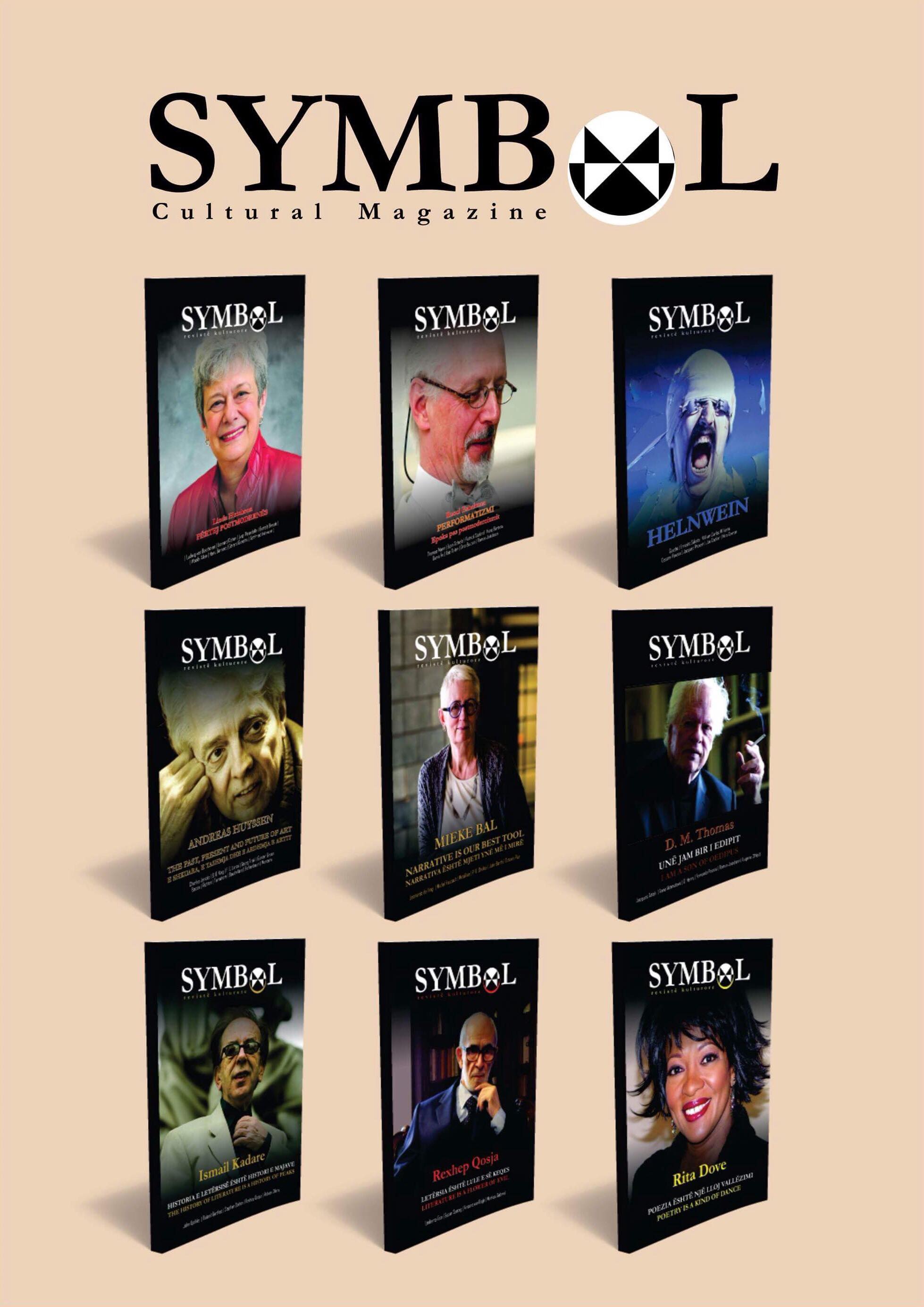
We kindly inform you that, as long as the subject affiliation of our 300.000+ articles is in progress, you might get unsufficient or no results on your third level or second level search. In this case, please broaden your search criteria.


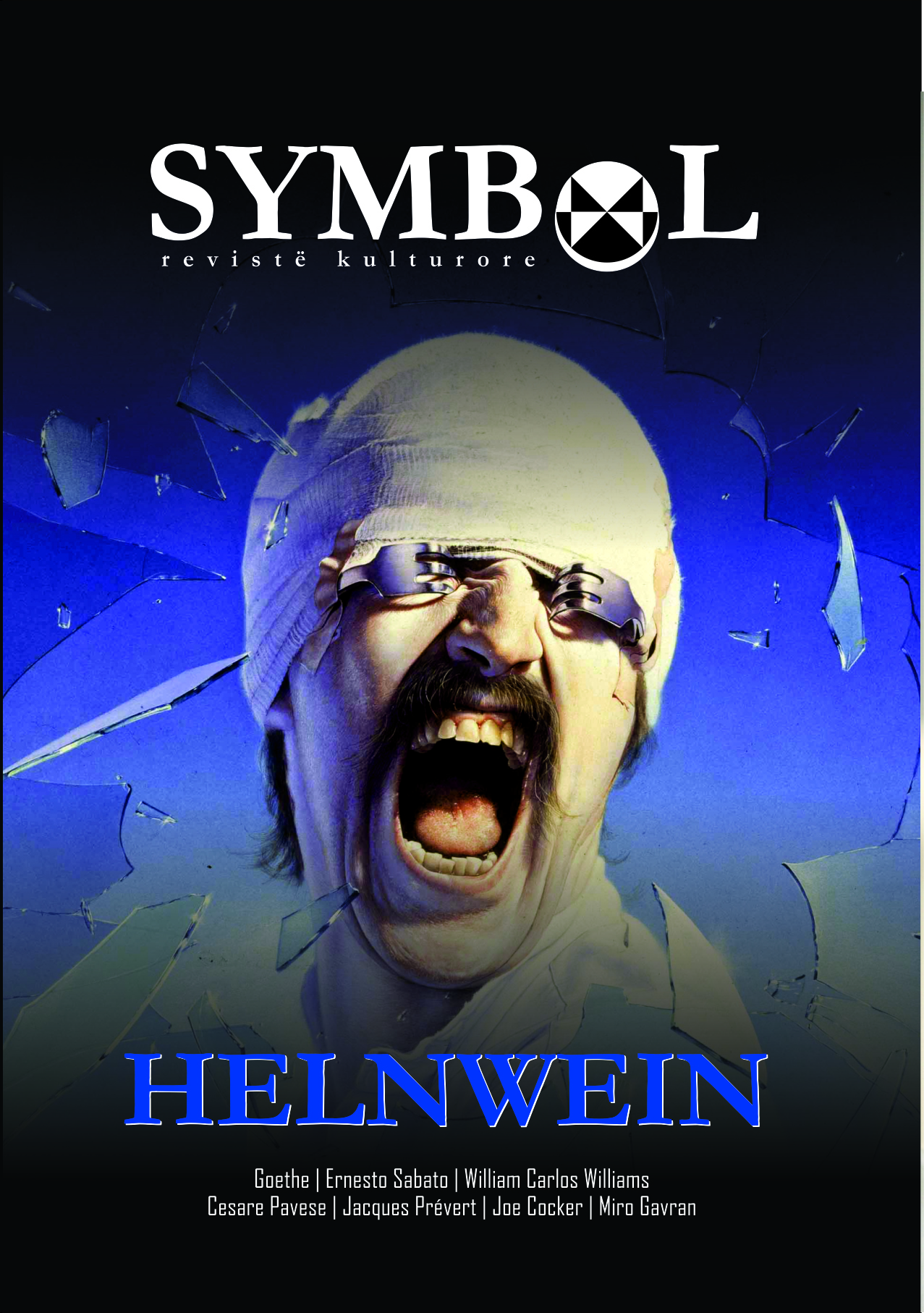
Në kontekstin e ndërlikuar të letërsisë shqipe të gjysmës së dytë të shekullit XX në të cilin mplekseshin nga njëra anë miti dhe gjuha e tij e pasur asociative e simbolike, me realitetin e ngarkuar politik e historik u shfaqën poetë, të cilët prezantuan në poezinë shqipe përmasën më pak të pranishme në të dhe ndër më të ndërlikuarat, por më ontologjiket për poezinë: të menduarit filozofikisht, relacionet ekzistenciale dhe metafizike.
More...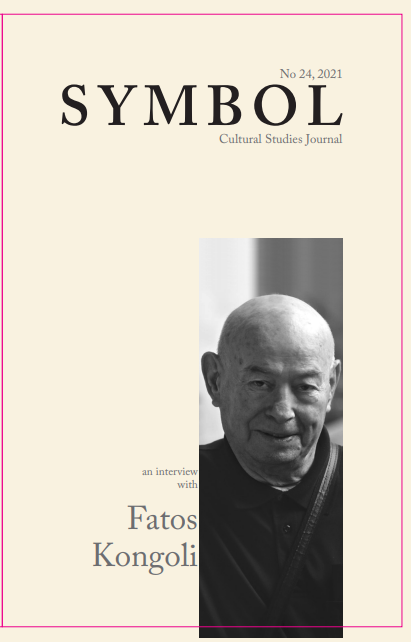
Multiculturalism also requires multilingualism. For example, Albanians from Kosovo are overwhelmed with the foreign preposition multi; they have a multi-ethnic state, a multilingual constitution, a multicultural society etc. While multilingualism has been considered a challenge of communication for a long time, now, in Albanian literature, it can be considered a form of communication. And in our literature also as a form of creation.
More...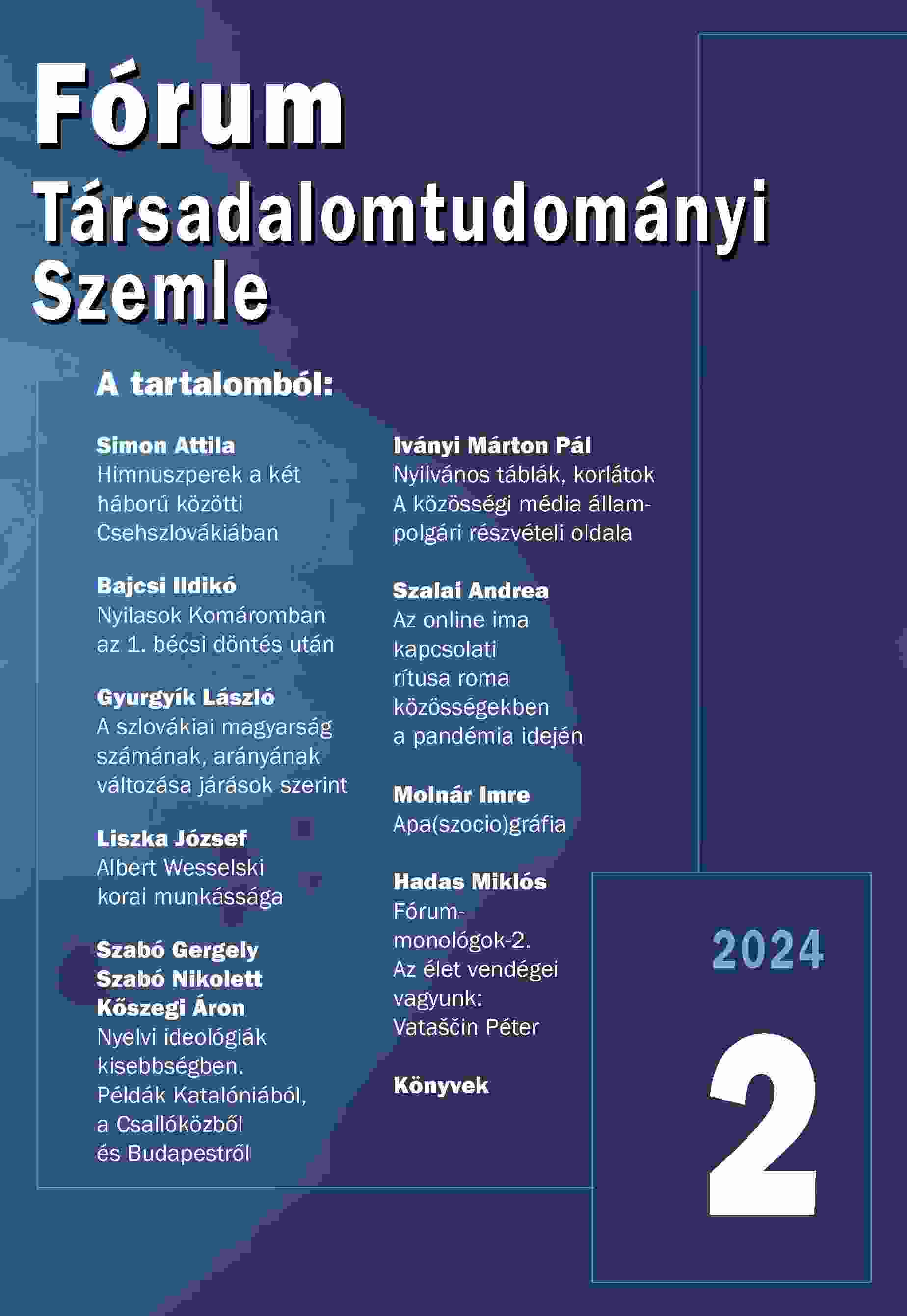
This paper attempts to present the intellectual legacy of Albert Wesselski (Vienna, 1871–Prague, 1939), a partly forgotten great figure of literary and textual folkloristic comparatistics of the first half of the 20th century, and argues for his timeliness. While he also played an important role as a literary mediator and translator (e.g. translations and interpretations of Boccaccio and Dante, translations of medieval Italian, French and Flemish folklore texts), he was primarily concerned with questions of the origins of European and Asian fairy tales, the problem of the processes of transmission and genre theory. He presented the transnational and transcontinental connections between individual (fairy-tale) texts in his reflections, which were based on his exceptional erudition and knowledge of the material. His views on the essentially literary origins of fairy-tale material were disputed by many in his day, but at least some of them now seem to be confirmed. His comparative method can be an inspiration for those working with folklore and literary texts, both here and now. The present paper attempts to provide a sketchy overview of the early stages of Wesselski's oeuvre and to inspire further reflection.
More...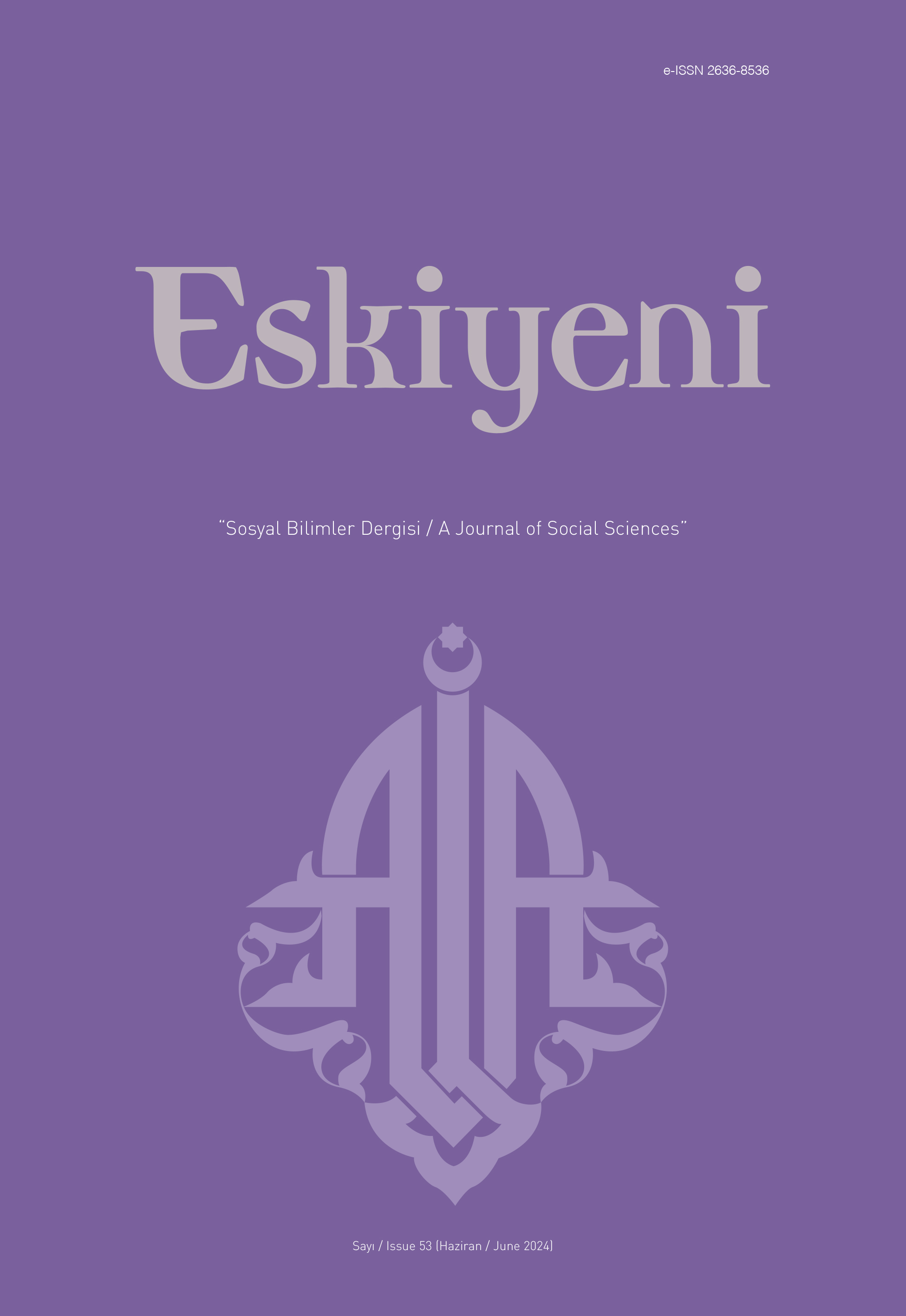
Over the years, the writing of sīrat, which dates back to the earliest times of Islamic history, has made an enormous and varied body of literature available. This literature developed through commentary-hashiyas, critique, and transmission, and even continued with the addition of thematic sub-genres. The works written in prose form, have influenced sīrat writing throughout history. During the Ottoman era, poetry gained prominence, with poetic sīrat texts being widely utilized. The sources and the method of text generation, which had a certain continuity until the modernization era, underwent a significant in this period. This rupture affected the sīrat texts of the Republic of Turkey period. A new age has been brought about by the criticism of the sīrat literature that is currently in existence using new preferences for the utilization of sources. Texts produced in a literary manner are found in this new era when many aspects of traditional sīrat writing have been abandoned. We are studying these texts authored by Alvarlı Hāja Muhammad Lutfī, who underwent classical education procedures and represented a tradition with a Sufi component. This study discusses two sections of Hāja Muhammad Lutfī’s Hulāsat al-ḥaqāyīq, which is regarded as one of the literary texts of sīrat writing: Mīrāj al-Nabī and Mawlid al-Nabī. The study begins with a brief history of the use of poetry as a writing form and source in sīrat writing, then, it emphasizes the forms of text construction, and finally, it discusses the main themes, sources, preferences, and mi’rājiya and mawlid sections of Hāja Muhammad Lutfī’s work in sīrat writing. In this way, it aimed to discuss the history of using poetry in sīrat literature, to open the poetic texts in the sīrat genre to the discussion, and for this purpose, the texts subject to the research were evaluated in terms of content, use of sources and style. As a result of the research, it has been seen that poetry, which has existed since the emergence of sīrat literature, has turned into a unique form of text construction in time and fed this literature, and that the mawlid and mi’rājiyya of Hāja Muhammad Lutfī are texts that continue the classical literature in the Republican period in terms of their sources and style.
More...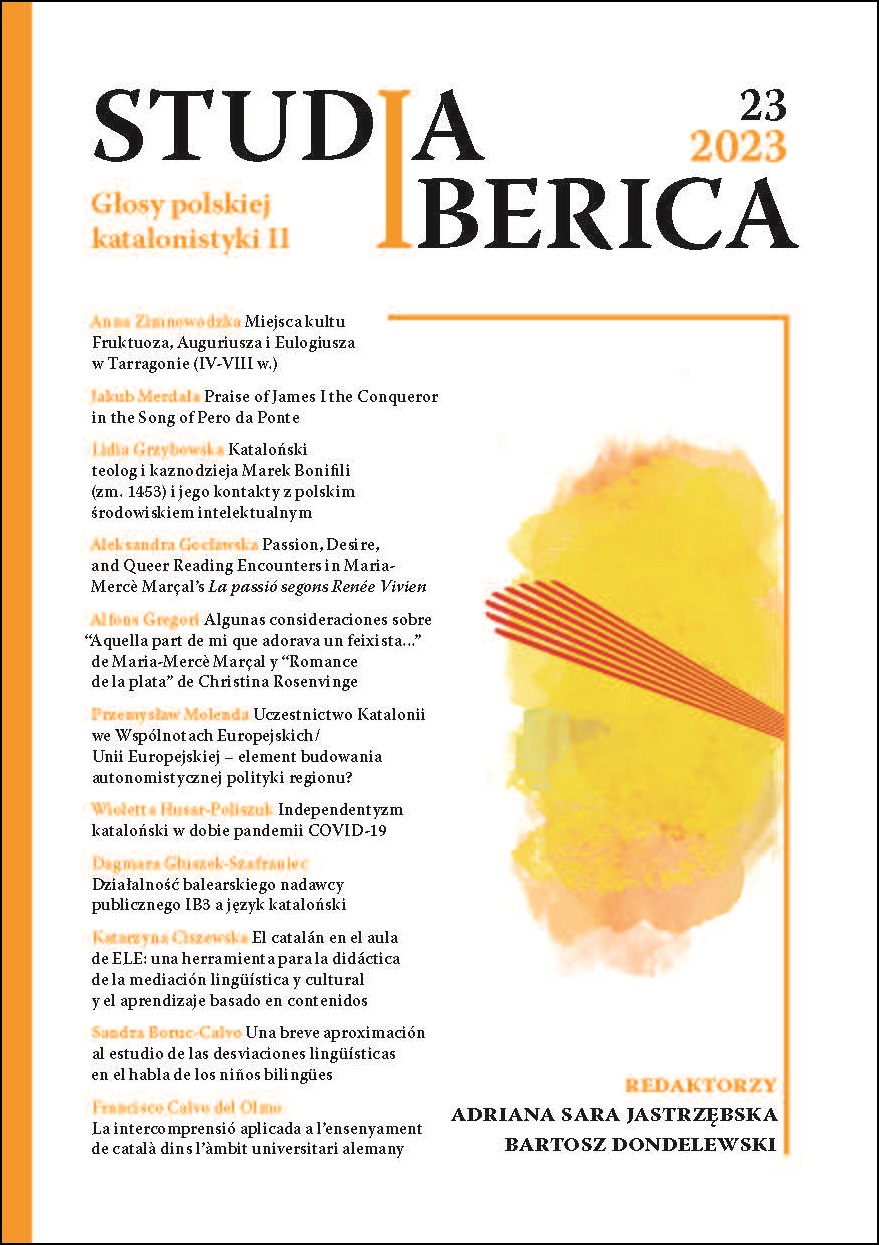
In this paper we present an analysis of the song O que Valença conquereu by the Galician-Portuguese troubadour, Pero da Ponte, dedicated to King of Aragon, James I the Conqueror, composed on the occasion of his conquest of Valencia in 1238. Within the Galician-Portuguese poetic tradition, references to the Crown of Aragon were not frequent, and when they did appear it was usually in a satirical/humorous context. In this article we present the state of research on Pero da Ponte’s potential links with the Aragonese court, and we situate his work in relation to the realities of both the Galician-Portuguese and Occitan poetic traditions. We present a detailed genre analysis of the song, pointing out the need to unify the genological terminology and offering a different perspective on the formal layer of the composition we are studying. We also make a comparison between how the Occitan-speaking troubadours portrayed James I in their works and how Pero da Ponte did, showing how the content of the work, the poetic devices used by the troubadour and the overall tone of the song place it in the group of poems dedicated to King of Aragon.
More...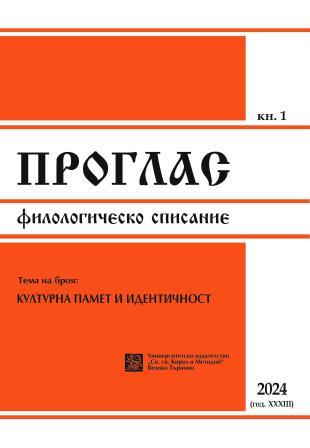
The present paper explores the significance of marine elements in the context of Ireland’s colonial history, focusing on the island, the coastline, and the Irish Sea as depicted in Charles R. Maturin’s novel, 𝑀𝑒𝑙𝑚𝑜𝑡ℎ 𝑡ℎ𝑒 𝑊𝑎𝑛𝑑𝑒𝑟𝑒𝑟. Employing postcolonial, ecocritical, and ecofeminist theories, the analysis aims to elucidate the connection between marine elements and the Irish national identity, and to highlight the novel’s contribution to the tradition of sea literature and Watery Romanticism.
More...
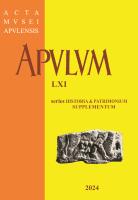
George Branković (Gheorghe Brancovici, Đorđe Branković, 1645-1711) was the brother of the Greek Orthodox bishop of Transylvania, Sava Brancovici (1615-1683). Initially, he was Apafi’s envoy and interpreter in Constantinople. Later, he became secretary to the Prince of Wallachia, Şerban Cantacuzino (reigned 1678-1688). Emperor Leopold I granted Branković the title of baron in 1683 and count in 1688. In 1690, imperial general Ludwig Wilhelm von Baden arrested him because he believed that Branković was inciting the Serbs against Vienna. After his arrest, Branković remained in prison for the rest of his life: he was imprisoned in Vienna until 1703 and then in Egger in Bohemia until 1711. During his imprisonment, he even composed an anti-Catholic and anti-Calvinist catechism. It was Emil Turdeanu who, during research carried out in 1936 and 1937 at the Library of the Royal Serbian Academy in Belgrade, discovered three religious works by George Branković. At the time, these three texts by Branković were in two different manuscripts. One, designated by Turdeanu as A, carried the number 168/8. The contents of this manuscript were as follows: 1. Book of holy prayers; title: Carte aciasta a sfântelor rugăciuni. 2. Catechism, in questions and answers, including 44 chapters (untitled) 3. Advice for true travelers; title: Cătră adevărați călători, comprising thirteen paragraphs. The other manuscript named by Turdeanu B, bore the number 236. According to him this manuscript presents the same texts as manuscript A except that it omits from the end of the Book of Prayers a brief biographical note, deletes the incomplete text from the end of manuscript A, that is to say Advice for true travelers. On the basis of two short autobiographical notes contained in the text of manuscript A, Turdeanu was able to establish precisely that the said manuscript was completed in October 1690. Manuscript B being a copy of manuscript A was written later and must have been made by one of those men with whom Branković came into contact during his stay in prison in Vienna: a certain Jovan Aleksijević, dvornik pisar with the despot, or Jovan Lipovskí, a relative of Branković, who accompanied the prisoner in his exile to Egger in Bohemia, and who collected the last confessions. It is thanks to him that, after long efforts with the Austrian authorities, the literary heritage of Georges Branković was returned to Serbian circles. Shortly after the publication of Turdeanu’s article on the discovery of Branković’s religious works, World War II broke out. Thus, Turdeanu no longer had the opportunity to make a more in-depth study of this subject, nor to edit these three works of Branković. Especially since even Turdeanu believed that during the bombing of Belgrade in April 1940 by the German air force, the two manuscripts containing Branković’s three texts had been destroyed. Fortunately, this is not the case, because during the bombing only manuscript 168/8 was destroyed. The other manuscript bearing the number 236 was preserved and can still be found today in the archives of the Library of the Serbian Academy (Српска Akadемија наука и уметности, SANU) under the same symbol. This manuscript is not autograph and contains only the prayer book and the catechism. Relevant literature has so far only registered the existence of the catechism, but the text has not yet received proper scholarly treatment. In the catechism, Branković defined Eastern Orthodoxy in opposition to Transylvanian Calvinism and the pressure of Catholic cultural colonisation emanating from the Viennese court. Branković’s work is a particularly important piece of cultural heritage because it deals with topics that are not usually discussed in contemporary catechisms: witchcraft, oath-breaking, popular religiosity, etc. In my study, I would like to make a brief comparison between some chapters of Branković’s catechism and between the other catechisms of the time (Ștefan Fogarasi, Varlaam, Cyrille Loukaris) and between the prefaces written to the different books of the New Testament text of the New Testament of Bălgrad (1648). I will treat first of all the chapters in which faith, good works and fasting are discussed.
More...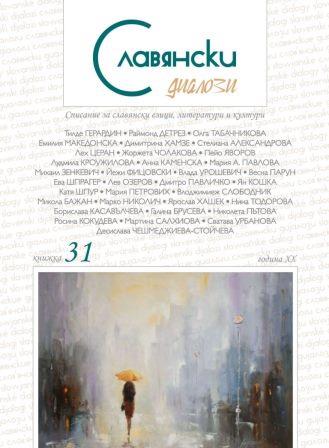
Хайдушки песни/Haiduk Songs - Translation into Czech by Ludmila Kroužilová Translation into Polish by Zdzisław Jerzy Kempf (I, IV), Translation into Polish by Anna Kamieńska (II, III) Translation into Russian by Maria A. Pavlova // Арменци/Armenians - Translation into Russian by Mikhail A. Zenkevich, Translation into Czech by Ludmila Kroužilová, Translation into Polish by Jerzy Ficowski // Две хубави очи/Two lovely eyes - Translation into Serbian by Vlada Urošević, Translation into Croatian by Vesna Parun, Translation into Polish by Anna Kamieńska, Translation into Slovenian by Eva Šprager, Translation into Chech by Ludmila Kroužilová, Translation into Russian by Lev Ozerov, Translation into Ukrainian by Dmitro Pavlichko, Translation into Slovak by Jan Koška // Копнение/Longing - Translation into Polish by Anna Kamieńska, Translation into Slovenian by Katja Špur // Не си виновна ти/The guilt is not in you - Translation into Czech by Ludmila Kroužilová, Translation into Serbian by Vlada Urošević, Translation into Russian by Maria Petrovykh, Translation into Polish by Włodzimierz Słobodnik // На Лора/To Laura - Translation into Czech by Ludmila Kroužilová, Translation into Polish by Włodzimierz Słobodnik, Translation into Slovenian by Eva Šprager, Translation into Ukrainian by Mikola Bazhan, Translation into Russian by Lev Ozerov, Translation into Serbian by Marko Nikolić // Вълшебница/Witch - Translation into Russian by Vladimir N. Sokolov Translation into Polish by Anna Kamieńska // Две души/Two Souls - Translation into Croatian by Vesna Parun, Translation into Russian by Lev Ozerov, Translation into Polish by Janina Brzostowska, Translation into Ukrainian by Vasil Moruga, Translation into Slovak by Jan Koška, Translation into Czech by Ludmila Kroužilová
More...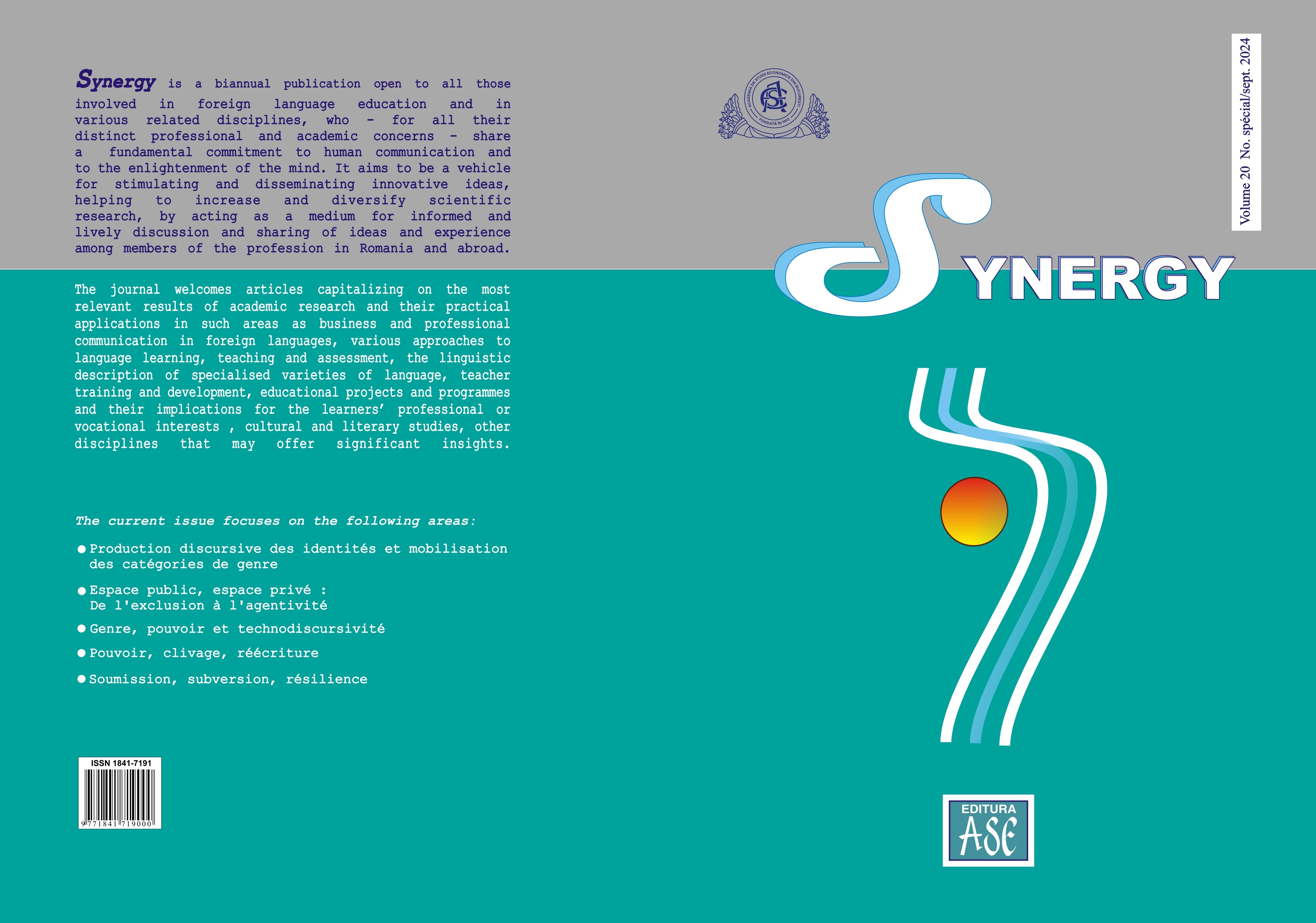
Max Weber defines power as "the probability that an actor will be able to impose his will in a social relationship, despite possible resistance" (Weber, 1947). Léonora Miano gives a voice to the subalterns in her work in order to rewrite African history. A new discourse is thus constructed in her narrative through a hybrid form of writing that aims to renegotiate the place of women and their relationship to power in African societies. Adopting a systemic approach, our aim is to demonstrate how a new social contract takes shape in L. Miano's novels.
More...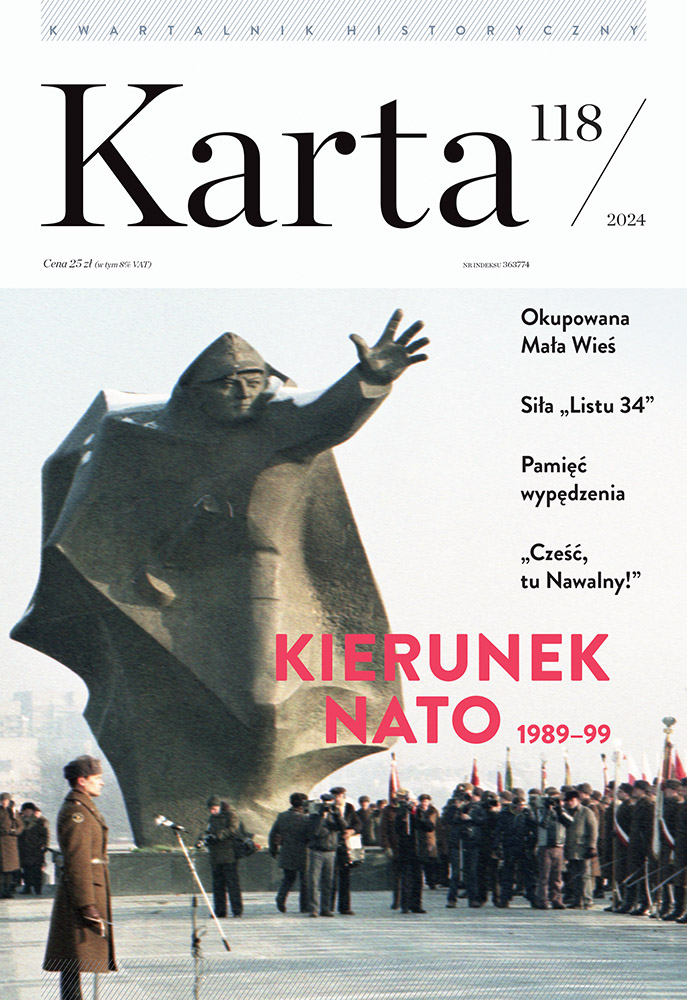
A moving reportage of the road. The German journalist takes the reader on a symbolic journey through memory and space along the trail of father's escape from the Red Army in 1945 from Lower Silesia to the west. An excerpt from the book “What We Don't Remember. On foot in the footsteps of father's escape” (translated by Ewa Czerwiakowska)
More...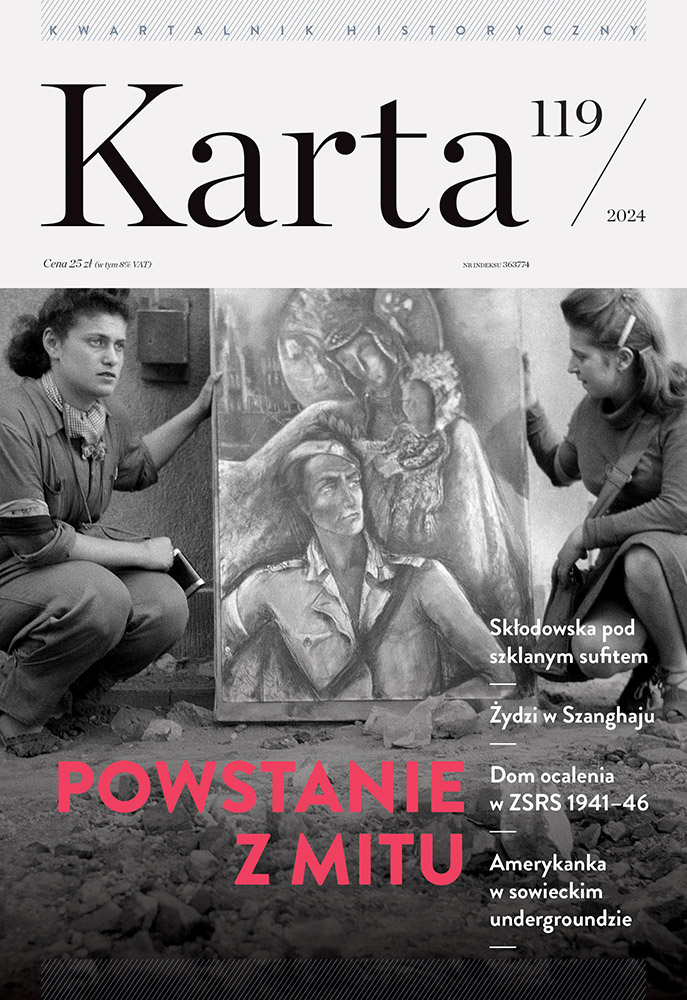
China's Shanghai 1939-45 as a place of salvation for thousands of European Jews - in the memoirs of a refugee from Germany
More...
A young American woman discovers the Soviet (1984-87) underground music scene and observes the political “thaw” with the rock revolution in the background
More...
The novel Wunderzeit is based on true events. Cătălin Dorian Florescu fictionalizes aspects of his own family history. The story is told from the perspective of a fictional teenager Alin who looks back at his own childhood. The first two chapters of the novel are centered on the perception of colors and are packed with rich imagery around three prevalent colors: yellow, red and black. These colors draw the reader’s attention to symbolic objects from the past: yellow was the shield on the road to freedom. Vivid red was the color of fresh and tasty tomatoes on the screen of a Grundig-TV. Red was the color of angry faces; red was the color of wounded faces. The scary flag of tyranny was red. Full of darkness is the experience of Alin and his friend on a black roof. As the story begins to develop, the narrator Alin leads us to believe that the earlier days of his life have been full of wonderful magical twists. In fact no altered perception in a traditional, romantic, dreamy sort of way is allowed. Homeland was no wonderland. Alin is not a victim of distorted sensory perceptions during trauma and stress. Habitual coolness and good humor are his secret weapons against collective insanity.
More...
To Damascus (Till Damascus) is considered August Strindberg’s first dream play, a trilogy in which the dream presents the inner world of the characters and their development. In the drama occur psychological processes and experiences, which move away from the real-life frame and at the same time, a firm connection between the real and in this sense dreamlike setting is established. The present paper deals with the analysis of the dream world on stage in ''To Damascus'' and with the methods, by which it is built, for example, stage directions, simplified decor, light design, sound and shadows. It is a fact that any symbol, motive, any relationship or textual information serve to present the inner world of the characters on stage.
More...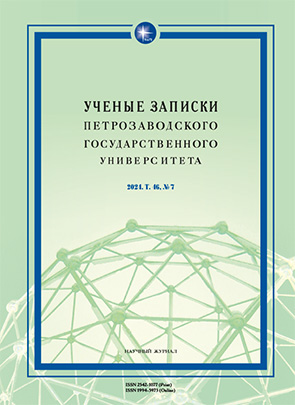
This article is aimed at studying the compilation Letters and Papers of Emperor Peter the Great in the phonetic aspect. The relevance of the study is determined by the fact that a number of writings reflecting the pronunciation features of the Emperor are not covered in comparative historical works. While the pronunciation of vowels and assimilative-dissimilative phenomena regarding consonants have been thoroughly studied and deeply comprehended, the groups of consonants that are spaced by vowel insertions in the speech of Peter the Great have been ignored. The aim of this study was to analyze the vowel insertions, which are regularly presented in unstressed positions and at the junction of morphemes, both in Russian and borrowed words. The research objectives were determined by the need to explain how vowel insertions correlate with the stable tradition of writing extruding letters in Russian manuscripts of the XV–XVII centuries and the dialectal features of the Russian language, hence, how the Emperor’s pronunciation is reflected in such insertions. It has been proved that the individual and possibly dialectal pronunciation of Peter the Great manifests itself in vowel insertions in the form of a tendency towards having open syllables in words and a well-formed Church Slavonic pronunciation, with a semi-soft consonant before vowel e and a soft consonant before ѣ (yat).
More...
The relevance of this study arises from the limited exploration of the syntactic structure in the works of Feophan Prokopovich. The focus of this research is on 318 substantive combinations drawn from five of the author's oratorical pieces. The objective is to analyze the structure of these combinations, provide a lexico-semantic characterization of their components, and identify their rhetorical functions. The research employs various methods, including survey analysis, classification, and stylistic analysis. The findings reveal that constructions featuring definitions paired with either dependent or main nouns are the most prevalent. In the majority of cases, a direct order of main and dependent nouns is observed. Definitions that accompany dependent nouns appear in both pre-position and post-position roughly equally, whereas those associated with main nouns predominantly occupy the pre-position. While the analysis identifies core models responsible for a significant number of constructions, there remains a substantial variety of patterns with flexible arrangements and differing numbers of components. The ways in which nouns and adjective definitions are expressed, along with their structural organization, suggest that these combinations serve as valuable rhetorical resources. Techniques such as inversion, chiasmus, metaphor, synonymous series, amplification, and repetition align with the text’s content and contribute to the oratorical objectives, such as honoring the monarch, his heirs, the state, and its warriors and victories. Furthermore, the figurative nature of many combinations is linked to the Church Slavonic tradition. The results of this study are significant for future investigations into substantive combinations within the history of the Russian literary language and for the exploration of the stylistic uniqueness of Feofan Prokopovich’s works.
More...
The article analyzes the syntactic theory of A. A. Shakhmatov from the point of view of its heuristic potential and relevance for modern linguistics. It proves that the concept of communication as the psychological basis of a sentence introduced by A. A. Shakhmatov in the early XX century has always been a reliable key to understanding the sentence as the most important linguistic unit and to explain the directions of its historical development. In contrast to the prevailing opinions in European linguistics, according to which in a combination of two notions that form the basis of a sentence any of them can be the main one depending on the will of the speaker, A. A. Shakhmatov argued that the dominant and subordinate notions of communication depend not on the will of the speaker, but on their own nature: the dominant idea is the idea of a substance in the material world, while the subordinate idea is the idea of its changeable sign or characteristic. This variability of the idea of a characteristic, dictated by the nature of what it denotes, is the impetus for syntactic changes in a sentence, because language, which reflects the experience of ethnic existence, is the most important means for expressing ethnic thinking. This is the essence and heuristic potential of the syntactic theory of A. A. Shakhmatov convincingly confirmed by research on the historical syntax of the Russian language.
More...